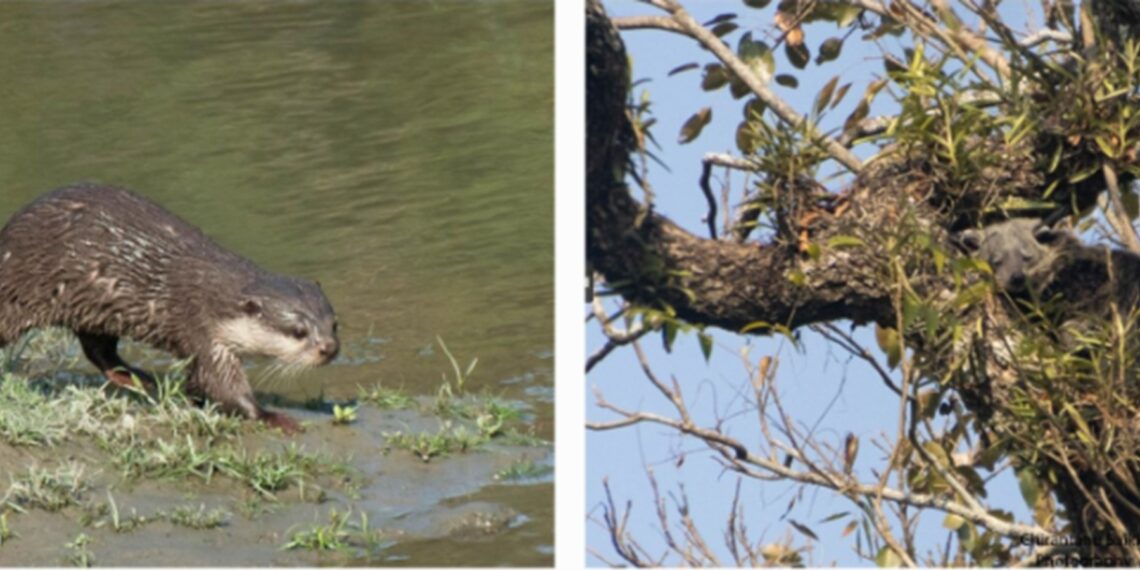GUWAHATI: The elusive binturong and the diminutive small-clawed otter have now joined the diverse array of wildlife thriving in Northeast’s largest national park, Kaziranga National Park and Tiger Reserve.
The recent identification of the binturong (Arctictis binturong) and small-clawed otter (Aonyx cinereus) has elevated the park’s mammal species count to an impressive 37, marking a significant addition to Northeast’s biodiversity.
Chirantanu Saikia, a diligent tour guide and photographer from Tezpur, captured a rare photograph of the elusive binturong during a jeep safari in the Burapahar range of Kaziranga.
Initially mistaken for a grey-headed fish-eagle, Saikia’s keen observation skills and photographic evidence confirmed the presence of the bearcat atop a tree.
Ranjit Kakati, Associate Professor at Chaiduar College, corroborated the identification, highlighting the scarcity of sightings due to the species’ nocturnal and arboreal habits.
Concerns arise over habitat loss and fragmentation threatening the vulnerable binturong populations, stressing on the urgency for conservation efforts.
Similarly, Arun Vignesh, Divisional Forest Officer of Eastern Assam Wildlife, documented the presence of the small-clawed otter, the smallest otter species globally, within Kaziranga’s biodiverse landscape.
Mistakenly identified as the offspring of smooth-coated otters, the distinct claw structure and unique physical features of the small-clawed otter were noted during a routine forest patrol.
Collaborating with S Hussain, a retired scientist from the Wildlife Institute of India specialising in otters, Vignesh confirmed the presence of this vulnerable species in Kaziranga, underscoring the need for comprehensive surveys to assess population dynamics and habitat requirements.
Anwaruddin Choudhury, an environmentalist based in Assam, lauded the documentation of these species, highlighting the importance of photographic evidence in bolstering conservation efforts.
With growing threats of habitat degradation and poaching, the newfound recognition of the binturong and small-clawed otter highlights the critical need for enhanced conservation initiatives to safeguard Northeast’s rich biodiversity.
As conservationists and researchers delve deeper into Kaziranga’s natural treasures, these discoveries serve as poignant reminders of the region’s ecological significance and the imperative of preserving its delicate ecosystems for generations to come.















